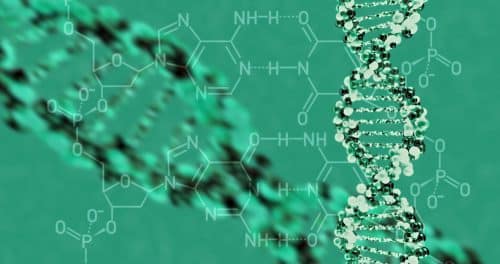Technion researchers have developed a simple, fast and accurate method for the production of challenging organic molecules that are essential in the pharmaceutical industry, other industries and in the world of research. The findings were published in the journal Nature Chemistry

Researchers at the Shulich Faculty of Chemistry at the Technion have developed a new approach to the creation of organic molecules with several adjacent stereochemical centers. The method is based on two stages and is characterized by simplicity, selectivity, diversity, speed and low cost. The findings were published in the journal Nature Chemistry.
The research was conducted in the organic chemistry laboratory at the Technion by the head of the laboratory Prof. Ilan Mark and the researchers Dr. David Piero and Dr. Jeffrey Brafferts. The researchers developed an innovative method for the creation of complex organic molecules on demand.
Organic synthesis is the creation of organic molecules, which are chemical compounds containing carbon atoms. The goal of this area of chemistry is to enable scientists to produce and study organic molecules, even when they are very complex, on demand. In this industry, innovative methods are constantly being developed to create challenging organic molecules that will be fast, cheap and as selective as possible.
"One of the main challenges in the field is the ability to selectively produce geometrically defined molecules, as well as to create any other geometric shape of the molecule that we request," explains Prof. Mark. "In our lab at the Technion, we were able to develop new approaches to these problems elegantly and simply."
The ability to produce organic molecules precisely on demand is an essential ability in the world of chemistry. This challenge is complicated for various reasons:
Important organic molecules often contain stereochemical centers - parts of the molecule that can exist in one of several different spatial forms. Controlling the shape of each of the chiral centers in a molecule is challenging, especially when it comes to a non-ring molecule, that is, a molecule in which all the atoms can rotate relative to each other and be in different spatial arrangements.
The properties of a given molecule are completely different from the properties of the enantiomer - its mirror image. Sometimes it is possible that a given molecule may cure a disease while its enantiomer will poison the patient. This is what happened in the thalidomide tragedy - an anti-nausea drug that led to the birth of thousands of babies with birth defects. Therefore, the ability to precisely control the shape of the molecule is very important.
The method developed by the Technion researchers is a two-step approach to the selective creation of many complex molecules in a simple and efficient manner. In the first step they created molecules in a ring configuration. The rings are stretched and not flexible, so it is relatively easy to determine the position of each atom and control the shape of the stereochemical centers. In the second step, they used a catalyst to break the ring at a certain point and obtain a non-ring molecule with several stereochemical centers. In this experiment, they took advantage of an oxygen atom that was determined in the molecule in the first step and was now used as a lever to direct the entire operation while controlling the entire chain of events, in a sort of well-planned domino effect.
The flexibility of this strategy stems from the possibility of obtaining different stereoisomers - molecules with different shapes of the stereochemical centers. This is by using slightly different starting materials. With this method it is possible to obtain different variations of the same molecule.
At the end of the two steps, the researchers could create and study one product at a time out of 16 similar possible products. The results allowed the researchers to produce a wide family of structures in a way that was not possible with previous methods. The new method is characterized by selectivity, variety, low cost and high production speed. The research is of great interest to the academic community as well as the chemical industries and the pharmaceutical industry. "This approach is attracting more and more attention because it allows us to create very complex systems in an easy and simple way," says Prof. Mark. "In fact, we have developed here a new methodology, or a toolbox, that will help the entire scientific community. Scientists will now be able to use this method to expand their research into many and varied applications."
Prof. Ilan Mark was born in Israel but moved to France with his family at the age of one. In 1988 he completed a doctorate at the Pierre et Marie Curie University in Paris, and after a post-doctorate in Belgium he worked as a researcher at the Pierre et Marie Curie University. In 1997, after 34 years in France, he returned to Israel and joined the Faculty of Chemistry at the Technion. Today he heads the Malech Family Organic Chemistry Laboratory and holds the Sobel Chair. Prof. Mark has won many awards including the Weizmann Prize for Exact Sciences, the Excellence Award of the Israel Chemical Society, the Alon Scholarship, the Michael Bruno Award, the Taub Award for Academic Excellence and awards for teaching excellence including the Yanai Award from the Technion. This year he was admitted as a member of the French Academy of Sciences.
